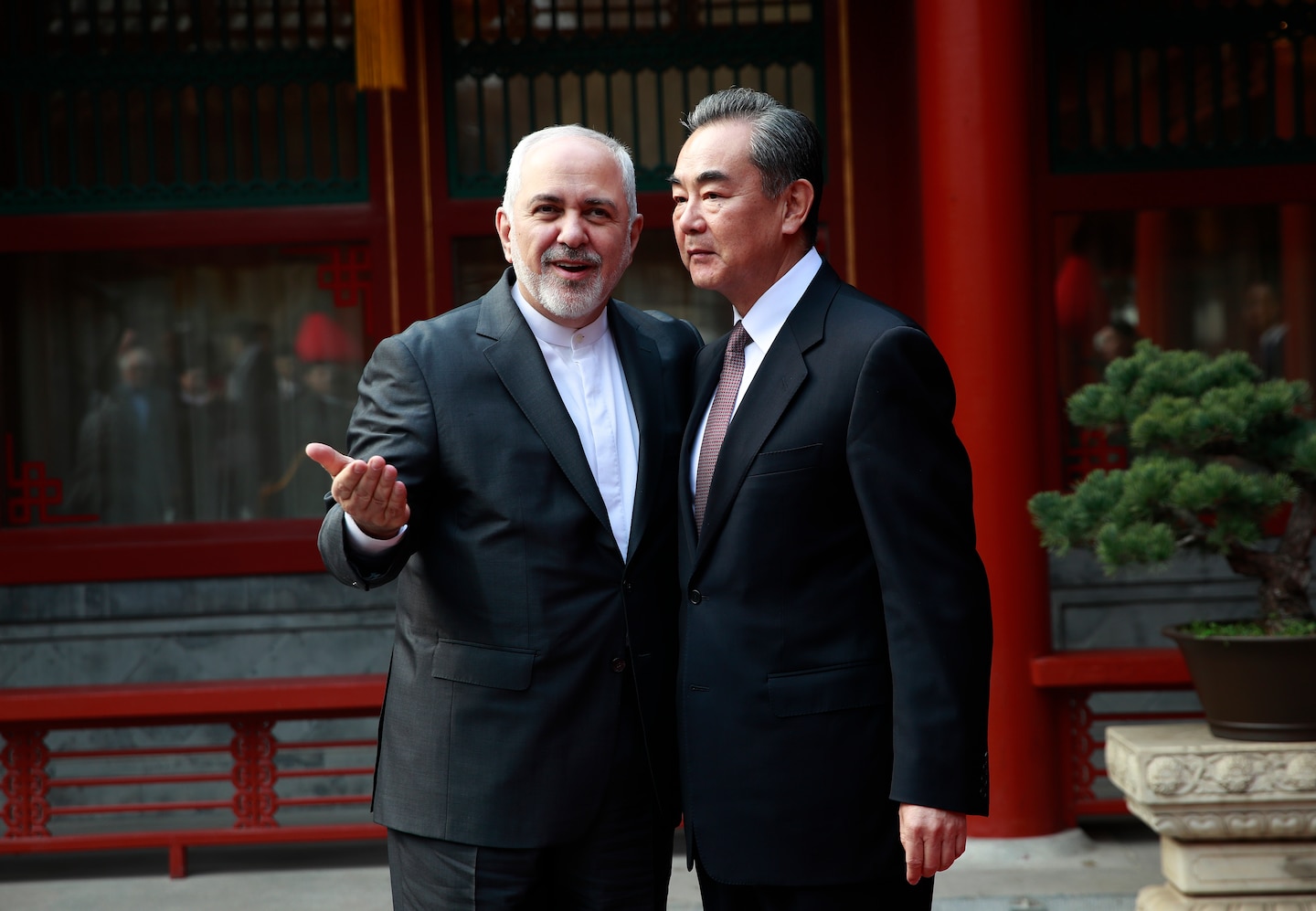Trump’s two main foreign foes plan a major pact

Last week, Iranian Foreign Minister Mohammad Javad Zarif acknowledged in a parliamentary session that his government is, “with confidence and conviction,” in negotiations with China over a 25-year strategic partnership that could involve about $400 billion in Chinese investment through various sectors of the Iranian economy. An outline of the accord’s details surfaced in an 18-page leaked document online, whose provenance is unclear though it roughly aligns with mooted plans previously announced by the Iranian government. According to the New York Times, a version of the document dated in June that its reporters obtained is a draft of a pending agreement with China.
The pact between the two countries would be far-reaching: It would increase intelligence sharing and security cooperation, including in possible missions in Syria and Iraq. It would also see Chinese companies expand their footprints in Iranian railroads, ports and telecommunications, while securing for Beijing a steady and discounted Iranian oil supply for the next quarter-century. China would develop free-trade zones in strategic locations in Iran, further binding the country into Beijing’s sprawling Belt and Road global trade and development initiative.
Even though it has been in the works since 2016, before Trump was elected, the timing of this potential agreement is conspicuous. It’s a reminder of how unlikely it was that Trump could cajole Tehran to sit down for new negotiations after scrapping U.S. commitments to the nuclear deal, a diplomatic agreement that was years in the making and involved the efforts of major powers, including China. Now, with their economy in tatters, the Iranians are seeking a lifeline from Beijing. And Chinese officials, given their own tussle with Washington, seem willing to take the risk.
“At a time when the United States is reeling from recession and the coronavirus, and increasingly isolated internationally, Beijing senses American weakness,” wrote Times reporters Farnaz Fassihi and Steven Lee Myers. “The draft agreement with Iran shows that unlike most countries, China feels it is in a position to defy the United States, powerful enough to withstand American penalties, as it has in the trade war waged by President Trump.”
It is unclear when an actual deal will get pushed through. When asked about it by reporters last week, Chinese Foreign Ministry spokesman Zhao Lijian offered a customarily anodyne response. “China and Iran enjoy traditional friendship, and the two sides have been in communication on the development of bilateral relations,” he said. “We stand ready to work with Iran to steadily advance practical cooperation.”
China is also playing a key role at the U.N. Security Council in blocking the Trump administration’s efforts to extend an arms embargo on Iran that is set to expire later this year. Last month, China’s ambassador to the United Nations, Zhang Jun, rebuffed U.S. attempts to use the terms of the nuclear deal to reimpose the weapons ban, scolding the Trump administration for not holding up its end of the bargain in the first place.
Some analysts abroad saw hypocrisy in Tehran’s courtship of Beijing. “An Iranian regime whose revolutionary identity is premised on countering U.S. imperialism and Islamophobia is about to ratify its total economic and strategic dependency on a Chinese government that keeps over 1 million Muslims in re-education camps,” tweeted Karim Sadjadpour, a senior fellow at the Carnegie Endowment for International Peace.
Within Iran, the matter is hardly settled. It will require a vote in a parliament now dominated by hard-liners who are already furious with President Hassan Rouhani over both his handling of the coronavirus pandemic and the failure of the nuclear deal. Rouhani’s signature diplomatic triumph has effectively turned to ash, with his country’s economy asphyxiated by U.S. sanctions once more and the prospect of an opening to the West seemingly dashed.
But Iran’s turn toward countries like Russia and China has raised concerns about the inequitable price it may have to pay. Last month, former president Mahmoud Ahmadinejad warned in a speech of the country’s current leadership discussing a monumental pact “away from the eyes of the Iranian nation.” Some critics, reported Radio Free Europe/Radio Free Liberty’s Golnaz Esfandiari, likened the proposed deal to “the 1828 Treaty of Turkmenchay between Persia and tsarist Russia, under which the Persians ceded control of territory in the South Caucasus.”
Zarif said there was “nothing secret” about the ongoing negotiations, and media outlets linked to the Iranian Revolutionary Guard Corps — an occasional political adversary of Rouhani and Zarif — seemed to back the diplomatic process. “However, neither Zarif nor IRGC mouthpieces openly admitted why the Islamic Republic is compelled to orient itself toward China,” wrote Ali Alfoneh, a senior fellow at the Arab Gulf States Institute in Washington. “In the face of the U.S. administration’s ‘maximum pressure’ campaign, the Islamic Republic is turning toward China to secure its survival.”
Read more:






